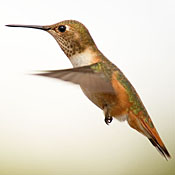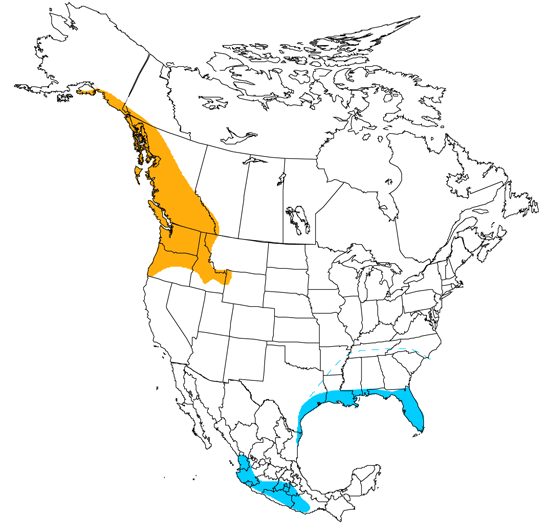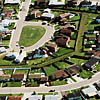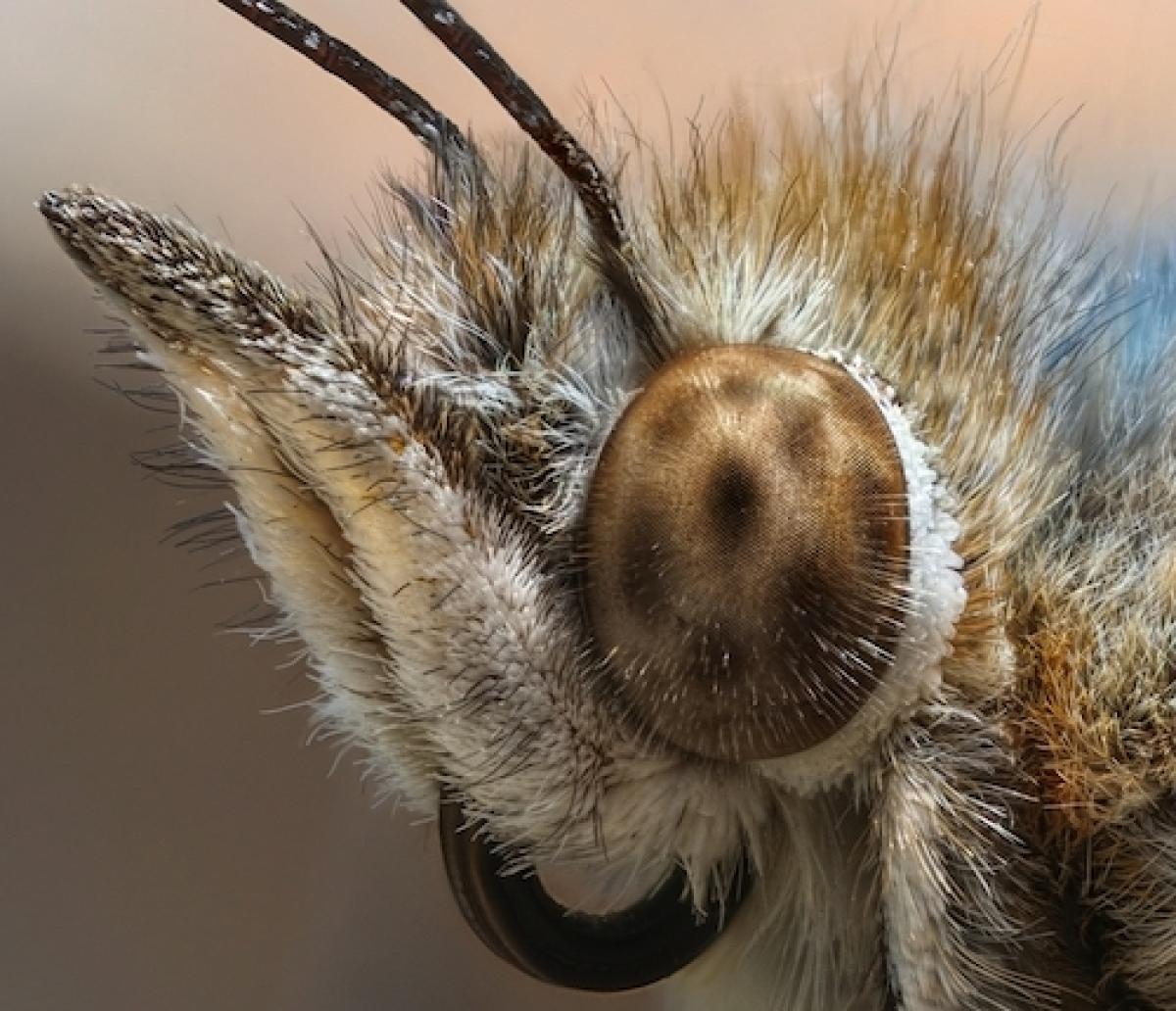Rufous Hummingbird
Selasphorus rufus

Hummingbird
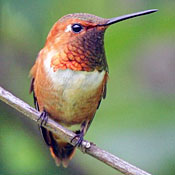
Length: 4 in. (10 cm )
On its summer breeding grounds, this species is a relatively common in coniferous forest near open meadows. Here it feeds on flower nectar, tree sap, small insects and spiders. Its nest is a tiny cup-like structure on a drooping limb low to high in the forest. It is made of plant down and covered with lichens and spider webbing. This hummingbird, for its size, is one of the most pugnacious species, and it readily chases almost all other hummingbirds as well as orioles and larger birds from its nectar sources. It is readily attracted to artificial nectar feeders, especially in migration.
The four-digit banding code is RUHU.
Bibliographic details:
- Article: Rufous Hummingbird
- Author(s): Dr. Biology
- Publisher: Arizona State University School of Life Sciences Ask A Biologist
- Site name: ASU - Ask A Biologist
- Date published: 13 Jul, 2017
- Date accessed: 24 November, 2025
- Link: https://askabiologist.asu.edu/activities/bird/rufous-hummingbird
APA Style
Dr. Biology. (Thu, 07/13/2017 - 15:38). Rufous Hummingbird. ASU - Ask A Biologist. Retrieved from https://askabiologist.asu.edu/activities/bird/rufous-hummingbird
Chicago Manual of Style
Dr. Biology. "Rufous Hummingbird". ASU - Ask A Biologist. 13 Jul 2017. https://askabiologist.asu.edu/activities/bird/rufous-hummingbird
MLA 2017 Style
Dr. Biology. "Rufous Hummingbird". ASU - Ask A Biologist. 13 Jul 2017. ASU - Ask A Biologist, Web. https://askabiologist.asu.edu/activities/bird/rufous-hummingbird
Be Part of
Ask A Biologist
By volunteering, or simply sending us feedback on the site. Scientists, teachers, writers, illustrators, and translators are all important to the program. If you are interested in helping with the website we have a Volunteers page to get the process started.



